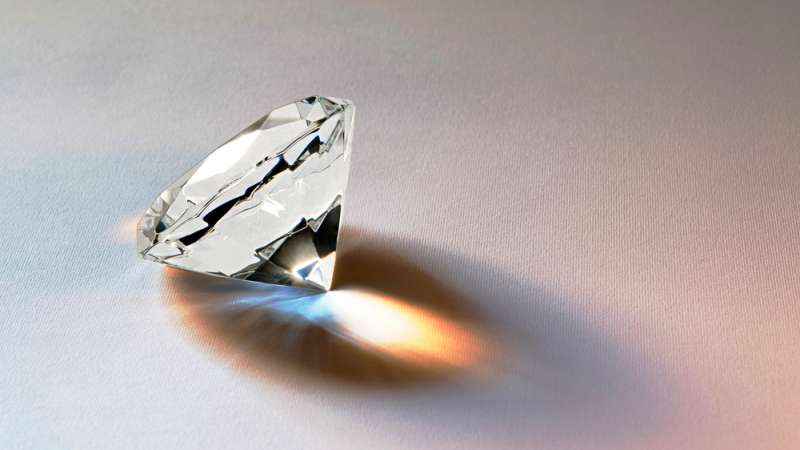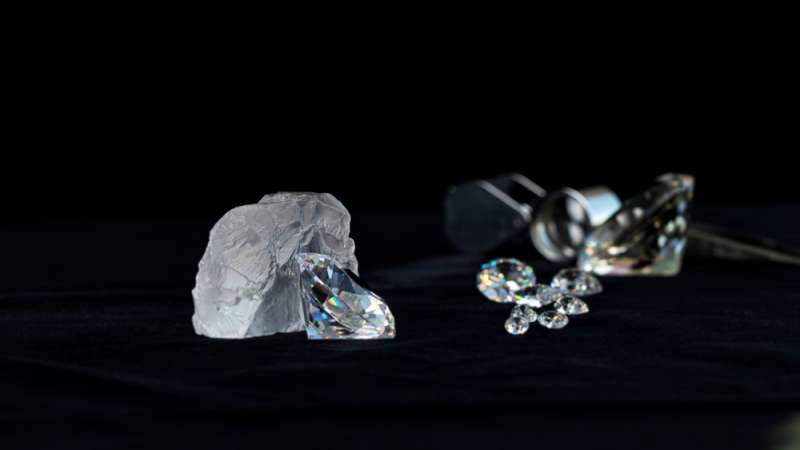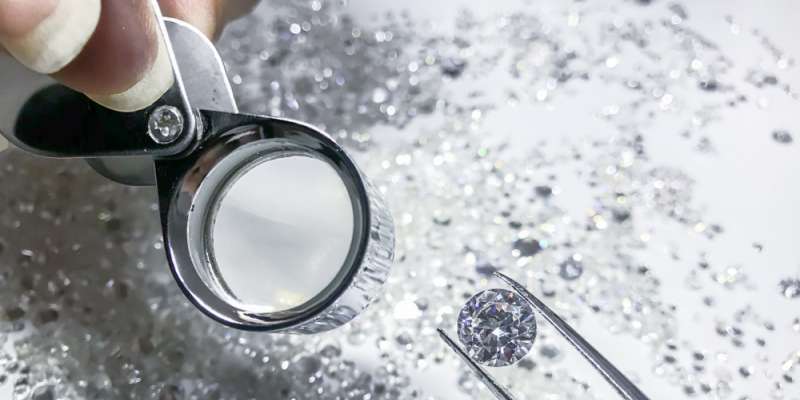An eye-clean diamond refers to a diamond that appears free from visible imperfections, damage, bubbles, or other flaws when viewed with the naked eye. While a completely flawless diamond is extremely rare and expensive, most diamonds have imperfections that are not noticeable without magnification. An eye-clean diamond falls into this category, where its inclusions are small and require a magnifying glass to be seen.
These imperfections, although present, do not compromise the beauty and quality of the diamond. Due to their more frequent occurrence in nature, eye-clean diamonds are generally more affordable than those with no visible or invisible damage.
The clarity of a diamond is determined by a grading scale, ranging from FL (flawless) to I3 (imperfect) based on the visibility of inclusions within the diamond’s structure. Various grades exist within this scale, and in this article, we will delve into these classifications and provide tips on how to identify an eye-clean diamond.
Stay with us to explore further information, guidelines, and intriguing facts related to this subject.
DESIGN YOUR OWN ENGAGEMENT RING: START WITH A SETTING OR START WITH A DIAMOND. IT’S REALLY UP TO YOU!

Tips For Finding Eye-Clean Diamonds
Discovering an eye-clean diamond may initially seem like a daunting task, but with some basic knowledge, it can be a relatively straightforward process. Follow these tips carefully to make your search easier!
When embarking on the quest for an eye-clean diamond, don’t let the concept of inclusions and the diamond clarity scale intimidate you. Remember that it’s normal for diamonds to have inclusions as long as they are not visible to the naked eye.
While checking the clarity scale is important, it’s not the sole determining factor. Two diamonds can have the same rating on the scale but differ in the number or visibility of inclusions. The location and visibility of the inclusions depend on the nature of the diamond.
One crucial piece of advice is to closely examine the diamond, both up close and through zoomed-in pictures. If you’re selecting the diamond in a jewelry store, try to view it in natural daylight rather than under the dazzling store lights.
Additionally, consider the purpose for which you are buying the diamond. If it’s for a ring, keep in mind that certain parts of the diamond will be covered by the ring’s setting.
If a diamond catches your eye and falls within your budget, don’t hastily dismiss it due to an inclusion. Assess its location and consider whether it will be visible once set in the ring. If not, you may have found a quality stone.
Another useful tip in your search for the perfect diamond is that if you desire a specific color, inclusions that are invisible to the naked eye should matter even less. The only distinction between a diamond with invisible inclusions and one without any lies in the price, as they appear identical to the naked eye.
The purity of a diamond is significantly influenced by its shape and carat weight. Here are some tips regarding which shapes and carat weights are more likely to yield eye-clean diamonds. Remember the diamond clarity scale? The following examples utilize the marks from that scale to guide you toward the best choice of eye-clean diamond.
Round cut and princess cut diamonds are often eye-clean if they are less than two carats and fall within the VS2 and SI1 (very slightly included and slightly included) categories.
Heart-shaped diamonds are also excellent for finding eye-clean options. Look for diamonds in the VS2 and SI1 clarity range for a heart-shaped eye-clean diamond, as this shape tends to conceal inclusions well.
Oval cut, marquise, pear-shaped, and radiant cut diamonds are also adept at hiding inclusions. If you seek one of these shapes, aim for clarity grades below SI1 and SI2 (slightly included) for an eye-clean diamond.
Baguette and emerald cut diamonds are shapes where inclusions are more noticeable. To avoid this, opt for diamonds with a clarity grade of VS2 (very slightly included).
If you’re interested in exploring all the diamond shapes and learning more details about each one, check out our article on this topic [link to the article] for comprehensive information.

Imperfections Or “Inclusions”
Understanding inclusions is essential when choosing a diamond. Here’s everything you need to know about them:
Inclusions are natural and common characteristics found in most diamonds. During the cutting and finishing process, efforts are made to minimize the number of inclusions, unless they are positioned in areas that cannot be cut.
The worst type of inclusions are those that are visible to the naked eye. These include large, dark, and easily noticeable black spots that appear throughout the diamond. It is advisable to avoid diamonds with such inclusions.
On the other hand, inclusions that are not visible to the naked eye but can be seen under 10x magnification are generally acceptable. These inclusions should not impact your choice of diamond.
To better understand the types of inclusions, here are some familiar examples and their significance when selecting a diamond:
- Cloud: Cloud refers to a group of small pinpoints that appear together and can contribute to a hazy or cloudy appearance in the diamond.
- Cavity: Cavities are cracks or fissures within the diamond. If these cavities contain colored minerals, they may be more visible, even to the naked eye.
- Graining: Graining occurs due to irregular crystal growth and appears as colored or white lines, which can also contribute to a hazy appearance in the diamond.
- Feather: Feathers are small cracks that resemble the appearance of feathers. Some feathers may be barely visible, while others are more prominent and cause the diamond to appear white instead of transparent.
When buying diamonds, it’s important to consider the price ratio between eye-clean diamonds and those graded as flawless. Diamonds rated as VS2 and VS1 (very slightly included) often appear just as eye-clean as flawless diamonds (FL) but at a significantly lower cost. While these clarity grades impact the price, they have minimal effect on the diamond’s appearance.
Don’t overlook diamonds with inclusions that are invisible to the naked eye just because they lack the flawless mark. These diamonds can offer significant savings, sometimes up to three times less in price.
It’s worth noting that even real diamonds can become cloudy. Cloudiness refers to visible inclusions within the diamond, causing a hazy appearance. The cause of cloudiness can vary, and feather inclusions can also contribute to it. To avoid cloudiness, it’s important to consider the number and visibility of inclusions, whether they appear as clouds or feathers, and whether they are visible to the naked eye.
By paying attention to these factors, you can make a more informed decision when selecting a diamond.

Final Thoughts
Let’s review the key facts on how to determine if a diamond is eye-clean:
- Familiarize yourself with the diamond purity scale: Understanding the marks of purity is important when evaluating diamonds. These marks should not be a cause for concern when encountered.
- Consider types of inclusions: It’s essential to learn about different types of inclusions and determine which ones are acceptable and which ones are not. This knowledge will help you make an informed decision when purchasing a diamond.
- Shape and size matter: Certain diamond shapes and sizes have a higher likelihood of being eye-clean. Explore our guide to discover which shapes might align with your preferences.
- Examine the diamond closely: Take your time to carefully observe the diamond. If possible, examine it in daylight or zoom in on images to get a better view.
- Avoid overpaying: Unless your diamond carries the FL (flawless) mark, there’s no need to rush into paying a high price. An eye-clean diamond without the flawless mark will appear indistinguishable to others, and even to you unless you were informed otherwise.
By following these guidelines, you can confidently assess whether a diamond is eye-clean and make a wise purchasing decision.


